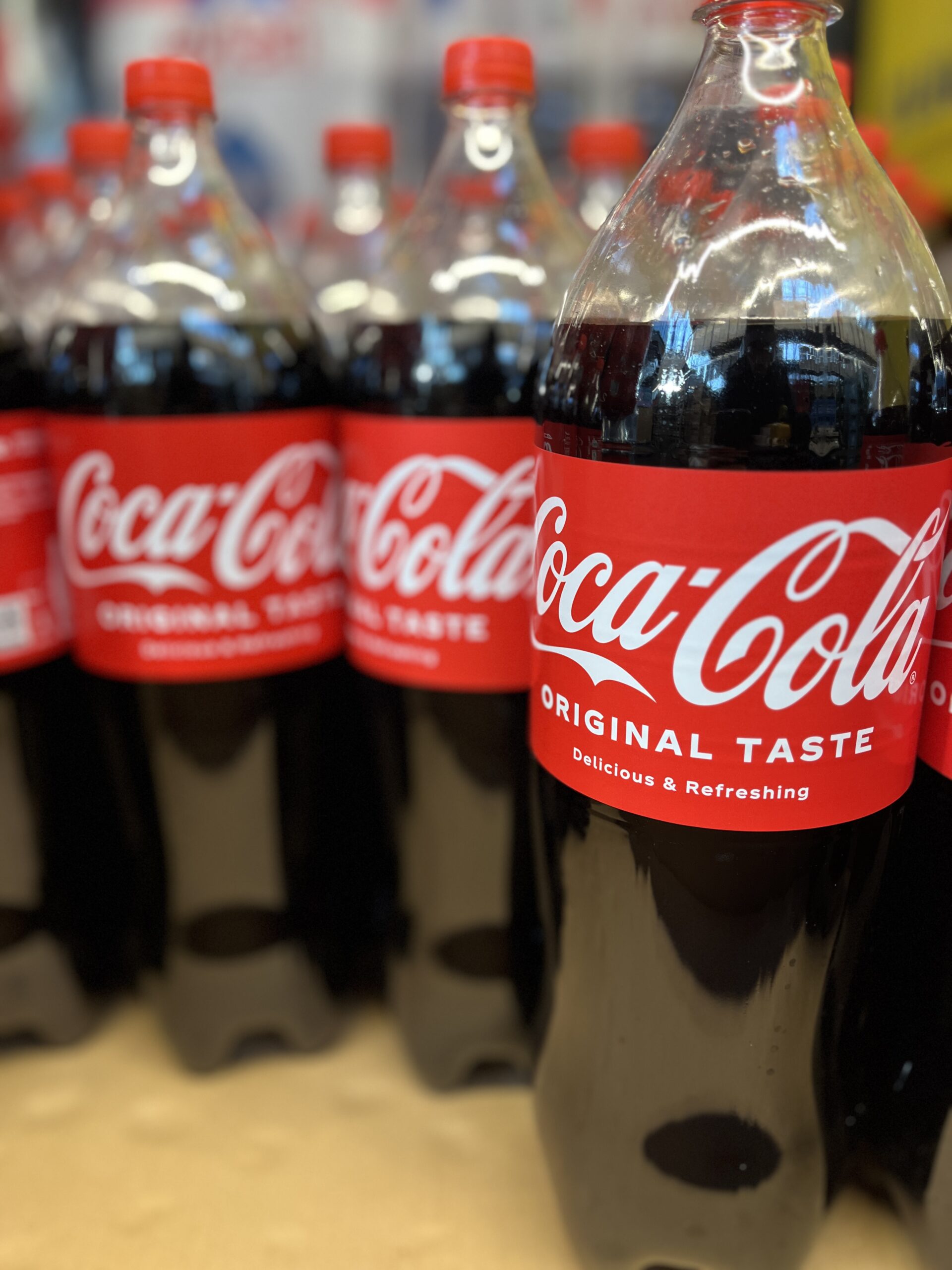Coca-Cola is widely recognized as the world’s most popular and widely consumed soft drink. It is estimated that nearly 2 billion servings of Coca-Cola are sold every day in 200 countries around the world.
Accidentally discovered by pharmacist John Stith Pemberton in 1886, the drink was originally intended as a headache reliever containing cocaine. Since then, however, it has evolved into a brand that ranks among the top 10 most valuable companies in the world, with sales expected to reach $58 billion by 2022
But behind the iconic Coca-Cola contour bottle, with its white lettering on a bright red background, is much more than just a soft drink. Thanks to clever advertising campaigns, the Atlanta-based company has successfully positioned itself as a symbol of Western culture.
Israel ranks 13th in per capita consumption, at about 60.9 liters per year. The cola sold in Israel is certified by the Rabbanut (Rabbinate) of Tel Aviv and Badatz Landau, while in the United States it is certified by the Orthodox Union (OU). Rabbi Moshe Landau and Rabbi Yerachmiel Morrison of the OU are among the few people who knew the secret formula of the syrup.
Kosher Coca-Cola concentrate is produced several times a year under strict supervision. It is then shipped to designated Coca-Cola factories where it is carbonated, bottled and packaged.
But has Coca-Cola always been kosher, and if not, how and when did it become kosher?
The Coca-Cola Company has been headquartered in Atlanta, Georgia, since its inception. In the 20th century, Rabbi Tuvia (Tobias) Geffen, an Eastern European immigrant, served as chief rabbi of Atlanta and headed the southern branch of the Union of Orthodox Rabbis.
It is unclear if Rabbi Geffen was approached by Coca-Cola or if it was his own initiative. In 1935, however, he was commissioned by the company to ensure that all ingredients and the manufacturing process complied with the laws of kashrut.
Through his research, he discovered that almost all of the ingredients were kosher, except for one. The problematic ingredient was animal-derived glycerin, which happened to be one of the main ingredients. According to William Poundstone in his book “Big Secrets” (1983), the original recipe contained 19 grams of glycerin.
At this point, a dispute arose among halachic authorities in America as to whether this finding rendered Coca-Cola “unkosher.
According to the Shulchan Aruch (Yoreh Deah Siman 98), if an unkosher substance is less than 1.6 percent of the total volume, it does not pose a halachic problem (bitul).
However, this is only true if the flavoring cannot be identified and is added unintentionally. Intentional addition is forbidden based on Ain Mevattelin Issur Lechatchila. If it is done anyway, it is not permitted for consumption by the “perpetrator” and those for whom it was made.
However, what if the mixing is done by a gentile manufacturer and you purchase it?
The Rashbaz (Rabbi Shimshon Ben Tsemach Duran, 1361-1444) believes that the purchase was also forbidden by the Sages, and there are numerous scholars who share his view. The vast majority of scholars disagree and allow purchase on the condition that the prohibited substance is not regularly mixed and is not part of the usual manufacturing process.
In the case of Coca-Cola, glycerin is unquestionably part of the common manufacturing process. Therefore, Rabbi Geffen concluded that the Coca-Cola recipe was not kosher. He suggested that they replace the animal glycerin with Procter & Gamble vegetable glycerin, and the Coca-Cola Company agreed.
Not all of Rabbi Geffen’s rabbinic colleagues agreed with his view that animal glycerin posed a halachic problem in these circumstances and that a change was necessary.
Rabbi Geffen proposed another change to allow Coca-Cola to be consumed on Passover:
According to Ashkenazi custom, legumes, known as kitniyot, are not permitted during Passover. These include rice and corn. As a result, the presence of the sweetener high fructose corn syrup presented a significant halachic issue for Ashkenazi Jews, as the concept of bitul (nullification) cannot be applied during Passover. Working with the company’s chemists, they concluded that the controversial sweetener could be replaced with cane sugar syrup for Passover without altering the taste.
To this day, kosher-for-Passover lines are made specifically for Passover using cane syrup instead of corn syrup. Coca-Cola bottles with a yellow cap are labeled as kosher for Passover.
In his responsa Karnei HaHod, Rabbi Tuvia Geffen recorded his halachic discussion regarding the kashrut of Coca-Cola. Rabbi Tuvia Geffen, who served as Chief Rabbi of Atlanta until his death on February 10, 1970, is also buried there. Because of his significant contribution, he is commonly referred to as the “Coca-Cola Rabbi.
As you enjoy the refreshing taste of an ice-cold Coca-Cola, take a moment to reflect on the remarkable story of Rabbi Tuvia Geffen.
Through his unwavering determination, he successfully influenced the iconic Coca-Cola Company to revise its cherished formula. This inspiring example reminds us that with perseverance and conviction, even multinational corporations can be persuaded to embrace positive change.




